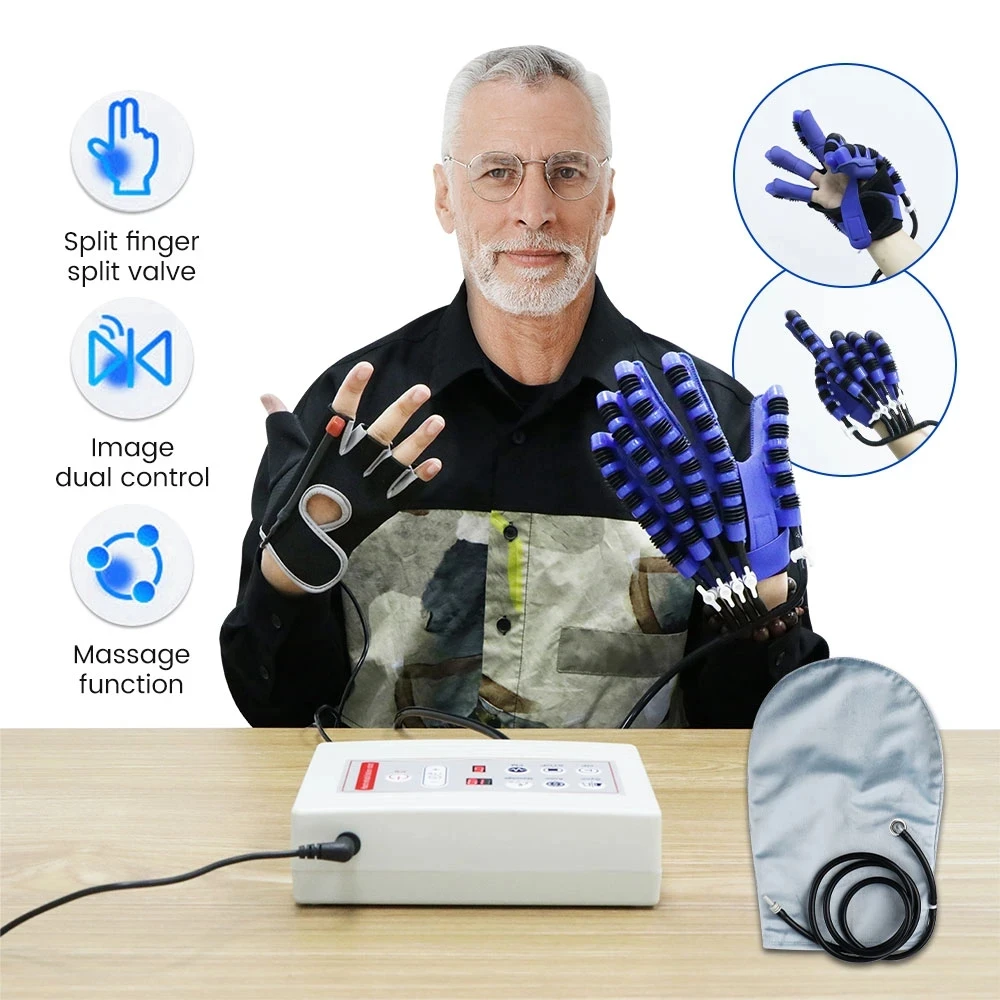Innovative Rehabilitation Solution: Restoring Hand Function with Pneumatic Gloves and Mirror Therapy
Popular Home Rehabilitation Robot Pneumatic Gloves Hand Rehabilitation Device Stroke Hemiplegia Hand Function Electric Pneumatic Mirror Nerve Stimulation Restoring Fingers Split Finger Trainer Tools Equipment It’s a great choice Home Rehabilitation Robot Pneumatic Gloves Hand Rehabilitation Device Stroke Hemiplegia Hand Function Electric Pneumatic Mirror Nerve Stimulation Restoring Fingers Split Finger Trainer Tools Equipment There are many features

## Home Rehabilitation Robot Pneumatic Gloves Hand Rehabilitation Device: A Comprehensive Review
### Introduction
Stroke, a cerebrovascular accident that occurs when blood flow to the brain is interrupted, is a leading cause of disability worldwide. One of the most disabling consequences of stroke is hemiplegia, a condition that causes weakness or paralysis on one side of the body. Hemiplegia can affect the hand, making it difficult or impossible to perform everyday tasks such as eating, dressing, and writing.
Hand rehabilitation is essential for improving function and regaining independence in individuals with hemiplegia. Traditional hand rehabilitation techniques, such as physical therapy and occupational therapy, have been shown to be effective in improving hand function. However, these techniques can be time-consuming and require a significant investment of time and effort.
In recent years, there has been growing interest in the use of home rehabilitation robots as an adjunct to traditional hand rehabilitation techniques. Home rehabilitation robots are devices that can be used by individuals with hemiplegia to perform repetitive hand exercises at home. These devices are designed to provide a safe and effective way to improve hand function and reduce the risk of secondary complications, such as muscle atrophy and joint stiffness.
### Types of Home Rehabilitation Robots
There are a variety of different types of home rehabilitation robots available on the market. These devices can be classified into two main categories:
* **Passive rehabilitation robots** provide support and assistance to the hand, allowing individuals to perform exercises without having to actively engage their muscles. Passive rehabilitation robots are often used for individuals with severe hemiplegia who have little or no voluntary movement in their hand.
* **Active rehabilitation robots** require individuals to actively engage their muscles to perform exercises. Active rehabilitation robots are often used for individuals with mild to moderate hemiplegia who have some voluntary movement in their hand.
### Benefits of Home Rehabilitation Robots
There are a number of benefits to using home rehabilitation robots for hand rehabilitation. These benefits include:
* **Improved hand function:** Home rehabilitation robots have been shown to be effective in improving hand function in individuals with hemiplegia. Studies have shown that individuals who use home rehabilitation robots can significantly increase their range of motion, strength, and dexterity.
* **Reduced risk of secondary complications:** Home rehabilitation robots can help to reduce the risk of secondary complications, such as muscle atrophy and joint stiffness. By providing support and assistance to the hand, home rehabilitation robots can help to prevent the muscles from becoming weak and the joints from becoming stiff.
* **Increased independence:** Home rehabilitation robots can help individuals with hemiplegia to become more independent. By improving hand function, home rehabilitation robots can make it easier for individuals to perform everyday tasks, such as eating, dressing, and writing.
* **Convenience:** Home rehabilitation robots are convenient to use. These devices can be used at home, which can save individuals time and money on travel costs. Home rehabilitation robots are also easy to use, and they can be tailored to meet the individual needs of each user.
### How to Choose a Home Rehabilitation Robot
When choosing a home rehabilitation robot, it is important to consider the following factors:
* **The type of hemiplegia:** The type of hemiplegia that the individual has will determine the type of home rehabilitation robot that is most appropriate. Individuals with severe hemiplegia may need a passive rehabilitation robot, while individuals with mild to moderate hemiplegia may be able to use an active rehabilitation robot.
* **The individual’s goals:** The individual’s goals for rehabilitation should also be considered when choosing a home rehabilitation robot. Some individuals may simply want to improve their range of motion, while others may want to regain full use of their hand. The type of home rehabilitation robot that is chosen should be able to meet the individual’s goals.
* **The cost:** Home rehabilitation robots can vary in cost. It is important to consider the cost of the robot when making a decision. Some home rehabilitation robots are covered by insurance, while others are not.
### Conclusion
Home rehabilitation robots are a valuable tool for hand rehabilitation in individuals with hemiplegia. These devices can improve hand function, reduce the risk of secondary complications, increase independence, and convenience. When choosing a home rehabilitation robot, it is important to consider the type of hemiplegia, the individual’s goals, and the cost.
